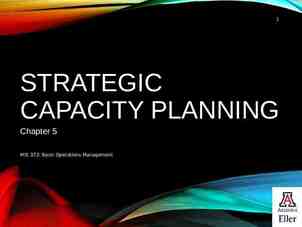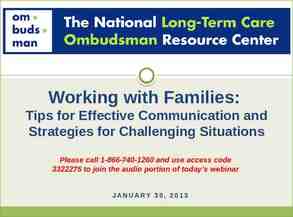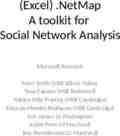1 The Five Foundations of Economics
30 Slides1.23 MB

1 The Five Foundations of Economics

Big Questions 1. What is economics? 2. What are the five foundations of economics?

Here’s a question for you When you hear the term “economics,” what words come to mind?

Purpose of This Course Provide you with the tools to – Discover how the world works – Be an informed citizen – Live your life to the fullest – Understand markets – Make better personal decisions

Economics in Ferris Bueller Here is a stereotypical representation of a “boring” economics class. Hopefully, you’ll enjoy this course a little more.

What Is Economics? Scarcity – The limited nature of society’s resources given society’s unlimited wants Economics – The study of how people allocate their limited resources to satisfy their unlimited wants – The study of how people make decisions

Practice What You Know —1 What can be said about scarcity? A. Scarcity forces us to make choices. B. Scarcity doesn’t affect the superwealthy. C. Scarcity only affects commodities such as oil. D. Scarcity generally doesn’t affect our day-to-day living.

Microeconomics and Macroeconomics Microeconomics – The study of individual units that make up the economy Focus on individuals, businesses, industries Macroeconomics – The study of the overall aspects and workings of an economy Focus on “big picture”

The Five Foundations of Economics—2 1. Incentives matter 2. Life is about trade-offs 3. Opportunity costs 4. Marginal thinking 5. Trade creates value

Incentives Matter—1 Incentives – Factors that motivate you to act or exert effort People respond to incentives!

Incentives Matter—2 Positive incentives – Encourage action by offering rewards or payments Negative incentives – Discourage action by providing undesirable consequences or punishments

Incentives Matter—3 Direct incentive – “Here is what I want you to do, and here is what I am going to do in order to get you to do it.” Generally easy to recognize Indirect incentive – A secondary change in behavior brought on by the original incentive More difficult to recognize

Incentives Matter—4 Unintended consequence – An unplanned result (usually negative and unwanted) of an incentive

Practice What You Know —2 Which of the following situations illustrates an incentive? A. Dave snacks all afternoon and isn’t hungry for dinner. B. Dirk’s children misbehave during dinner. C. Lee gives his children candy if they behave during dinner. D. Jaime goes to a restaurant for

Life Is About Trade-offs Scarcity implies choice Scarcity Choice – Every decision incurs a cost – To have one thing, you have to give up another thing

Practice What You Know —3 The governor decides to increase funding for education. However, this will mean decreasing funding for infrastructure. This situation illustrates A. trade-offs. B. comparative advantage. C. incentives. D. markets.

Opportunity Cost—1 Opportunity Cost – The highest-valued alternative that must be sacrificed to get something else Not all alternatives—just the next-best choice Scarcity Choice Opportunity Cost

Opportunity Cost—2 What is the opportunity cost of attending college? – Tuition and fees – Books – Earnings from full-time work What about room and board?

Practice What You Know —4 The opportunity cost of buying a good is A. the sum of values of all the other goods you could have purchased. B. the value of the next-best alternative you could have purchased. C. irrelevant since you will purchase your highest-valued good. D. the average of values of all the other goods you could have purchased.

Marginal Thinking—1 Economic thinking – Requires a purposeful evaluation of available opportunities to make the best decision possible Marginal thinking – Requires decision-makers to evaluate whether the benefit of one more unit of something is greater than the cost

Marginal Thinking—2 Suppose you are vacuuming your living room. Will you move the couch and china cabinet to vacuum under them? – Marginal benefit Small additional amount of carpet is cleaned – Marginal cost Much more time and effort

Economics in Grey’s Anatomy “Into You Like a Train” Episode A train accident occurs, and two patients end up with a pole stuck between them – Doctors have to choose who to save

Practice What You Know —5 With regards to marginal thinking, an individual will do an action if A. the probability of success is greater than 50 percent. B. the action has positive benefits. C. the costs of the action are small. D. marginal benefits marginal costs.

Trade Creates Value—1 Markets – Bring buyers and sellers together to exchange goods and services Trade – The voluntary exchange of goods and services between two or more parties

The Circular Flow—1 Circular Flow – Shows how resources and final goods and services flow through the economy Resource market Product market

The Circular Flow—2

The Circular Flow—3 Barter – Individuals trading a good or service in exchange for something they want Double coincidence of wants – Occurs when each party in an exchange transaction has what the other person desires

The Circular Flow—4

Trade Creates Value—2 Without trade, you would have to produce everything you consume. Trade fosters exchange of goods and promotes specialization. Comparative advantage – The situation in which an individual, business, or country can produce at a lower opportunity cost than a competitor

Conclusion Economists ask, and answer, big questions about life. This is what makes the study of economics so fascinating. Economics is the study of how people allocate their limited resources to satisfy nearly unlimited wants. The five foundations of economics: 1. 2. 3. 4. 5. Incentives Trade-offs Opportunity cost Marginal thinking Trade creates value






